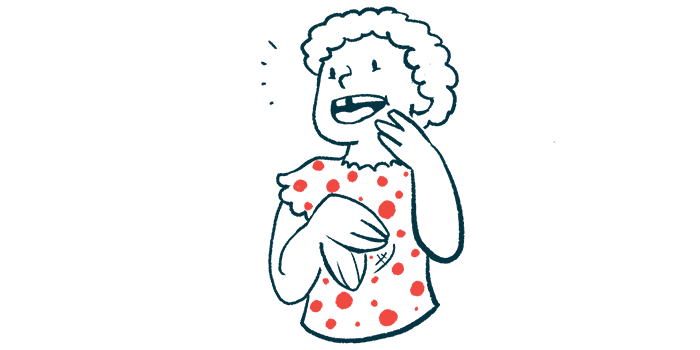Distinct Age-related Facial Features Evident in Angelman Patients

Computer analysis of the faces of Angelman syndrome patients found distinct facial features that changed from childhood to adulthood, a study has found.
These differences in facial structure may help identify and diagnose people with the condition, the researchers said.
The study, “Investigation of age-related facial variation among Angelman syndrome patients,” was published in Nature Scientific Reports.
Angelman syndrome is characterized by speech impairments, developmental delays, uncoordinated movements, excitability, seizures, as well as frequent smiling and laughing, often for no apparent reason.
In addition, patients have noticeable facial features such as protruding tongue, flat parts of the head, widely spaced teeth, wide mouth, protruding jaw, and crossed eyes.
Many of these features are not seen until after the child turns 1, even though developmental delays can be seen around 6 months. Since there may be no noticeable abnormalities in body structure early on, and multiple genetic mechanisms can cause Angelman, a diagnosis can be challenging.
Detecting and analyzing facial features and structure can identify people with Angelman syndrome. Previous studies testing this approach have been conducted in Down syndrome patients. One study focused on face shape in multiple genetic syndromes, including Angelman syndrome, but the images were collected from an internet source and were not related to age.
Researchers at the University of Putra Malaysia, in Malaysia, designed an age-related study to analyze structural features of Angelman patients’ faces from photos donated directly from the Angelman Syndrome Foundation.
“No such method has been applied to investigate the age-related variation of [Angelman syndrome] in morphometric [face shapes], which makes this study novel,” the researchers wrote.
The team analyzed 116 images of patients with Angelman that were subdivided into four age groups: 24 children under age 13; 39 teenagers between ages 13 to 19; 33 young adults from ages 20 to 29; and 20 adults, ages 30 and older.
A computer algorithm analyzed the images and detected 83 landmark features around the eyelid, eye, nose, mouth, chin, and cheek. From those, 17 were selected because they were visible on all the images and were most useful in detecting shape differences.
The locations of 10 linear distances were also selected, including eye size from side to side, the distance between the eyes from the inside and outside, face size at the top and bottom, length from the chin to the bottom lip, and the upper lip to the nose, as well as nose width and height, and mouth size from side to side.
Measurements were taken for each age group, statistically analyzed, and visualized in various graphs.
Based on the 17 facial landmarks, in children, the nose and the upper lip protruded downward and to the right while the lower lip bent slightly to the right and sank inward. The upper left cheek projected outward while the chin to the upper right cheek pointed inward.
In teenagers, the upper lip and nose projected downward and to the left, while the lower lips bent slightly to the left and sank inward. There was an inward projection from the chin to the upper left cheek, and the right cheek projected outward.
The upper lips and nose protruded rightward, but not downward in young adults, while the lower lips were bent slightly to the right and sank inward. The chin to the upper right cheek pointed inward, while the upper region of the left cheek projected outward.
Adults followed the same pattern as young adults — the upper lip and nose protruded to the right, but not down, and the lower lips bent slightly to the right and sank inward.
The opening between the eyelids, called the palpebral fissure, was longer in children, but shorter in young adults, based on the linear measurements. The distance between both the inner part of the eyelids and the outer part of the eyelid was widest in children, followed by teenagers, but narrower in young adults and adults.
Children had a wider facial width, followed by teenagers, while young adults and adults had the same facial width. Similarly, the mandibular (jaw) width was wider in children, followed by young adults and adults. Nose width was also wider in children, followed by teenagers, but of equal width in young adults and adults. The nose protruded more in children than in other age groups.
The distance from the corners of the mouth was equal and wider in children and teens, and equal, but narrower in young adults and adults. The distance from the upper lip to the nose was longer in children than in the other age groups.
For each age group, cross-validation results were most accurate for children, young adults, and adults, and lowest in teenagers.
Most variations among Angelman syndrome patients were seen in the nose, upper and lower lips, both cheeks, and chin. A downward protrusion to the right at the nose and upper lips was a common facial feature in children, young adults, and adults. No differences were observed in the eye region, except in the adult group.
From childhood to adulthood, there were sharp decreases in the length of the palpebral fissure, between both the inner and outer eyelid, the facial, nasal, and mouth widths, and the distance from the upper lip to the nose. In contrast, there was a steady decline in chin height from adults to children. A variation in structural features was more significant in children than adults.
“Conclusively, influence on facial shape is looked into under the age effect and there is an identification of a clear effect in the analysis,” the authors wrote. “The results demonstrate slight changes in the patterns of shape among the age classes.”
“In the future, more anatomical landmarks will be assigned and more anthropometric measurement [body measurements] will be carried out to increase the variability and significance of the study,” they added.






